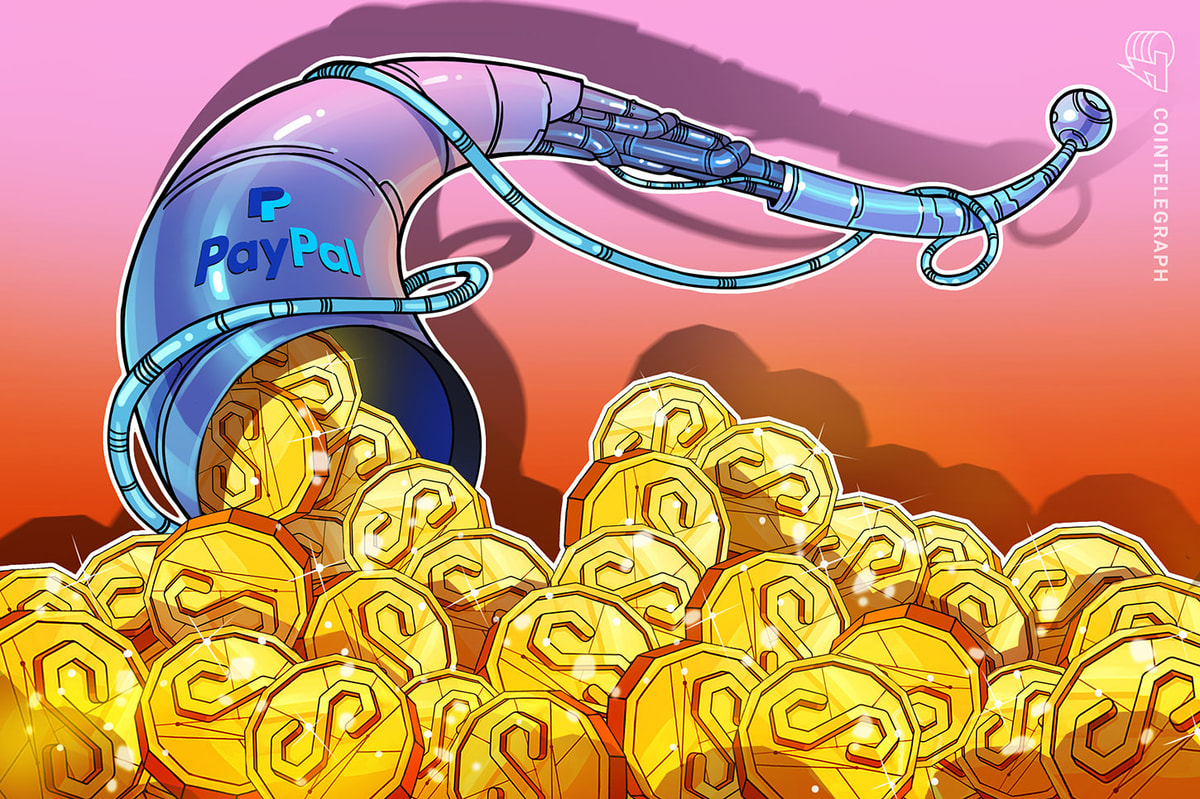PayPal’s introduction of its native stablecoin, PayPal USD (PYUSD), has sparked heated debates within the crypto industry regarding its possible sway
PayPal’s introduction of its native stablecoin, PayPal USD (PYUSD), has sparked heated debates within the crypto industry regarding its possible sway on payments and wider crypto adoption.
While this step seems to be a big jump toward accepting cryptocurrencies in regular finance, some industry observers advise caution. They underline the hurdles and limitations that could slow down broader adoption.
What is PYUSD?
This initiative aims to bridge the fiat and digital currency realms for consumers, merchants and developers. PayPal CEO Dan Schulman highlighted the need for a stable digital-fiat conduit. PYUSD facilitates various transactions, including payments, fund transfers between PayPal and compatible external wallets, and crypto conversions:
“The shift toward digital currencies requires a stable instrument that is both digitally native and easily connected to fiat currency like the U.S. dollar. Our commitment to responsible innovation and compliance, and our track record delivering new experiences to our customers, provides the foundation necessary to contribute to the growth of digital payments through PayPal USD.”
The coin is designed to mitigate payment frictions in virtual environments, expedite value transfer, and simplify digital asset engagement by being a safer alternative to the fluctuating nature of most cryptocurrencies.
PYUSD, being an ERC-20 token on the Ethereum blockchain, is geared for compatibility with prevalent exchanges, wallets and Web3 applications, with plans to extend its availability to Venmo.
While the coin is a step toward reducing the gap between conventional and digital financial ecosystems, the widespread adoption of PYUSD across PayPal’s vast user base in 200 markets remains to be seen.
Regulatory oversight for PYUSD is provided by the New York State Department of Financial Services, with Paxos set to publish a monthly reserve report and a third-party attestation of the reserve assets’ value from September 2023, promoting transparency.
Besides PYUSD, PayPal continues to focus on enhancing digital currency education and comprehension among consumers and merchants, supplementing its existing services that allow customers to transact in select cryptocurrencies.
Effect on the industry
“The launch of PYUSD really signifies the largest payments company to date embracing blockchain technology in a way that creates a new standard and a new level of utility in the product itself,” Walter Hessert notes on the American Banker podcast. Hessert is head of strategy at Paxos, a global blockchain infrastructure company.
“When PayPal enters the space and launches a stablecoin, they are saying to other payments companies, and to their tens of millions of merchants around the world, to their hundreds of millions of consumers that have their application, that stablecoin is a real product,” he added.
The PYUSD launch sends out a message: Stablecoins are in the mainstream, extending the benefits of blockchain to everyday transactions.
Hessert’s position depends on PayPal’s ability to act as a spark for wider crypto acceptance. Digital assets often live within their own limited systems, held back by regulatory frameworks. In this light, the coming of a stablecoin that acts as a bridge between old and digital money has a strong attraction.
Magazine: Real AI & crypto use cases, No. 4: Fight AI fakes with blockchain
Others are enticed by the possibility of PayPal’s stablecoin across multiple systems, believing that it will lead to the introduction of more use cases.
Pan Lorattawut, CEO of VUCA Digital, told Cointelegraph, “If PayPal’s stablecoin can be integrated into cross ecosystems, exchanges and wallets, it will increase the use cases of many digital assets, tokens and cryptocurrencies and make it a financial leader that can bridge many users to the crypto world.”
She asserts that the presence of stablecoins that can be easily traded, transferred and converted into other cryptocurrencies or fiat will make them more versatile and welcoming for crypto natives and new users.
However, Lorattawut is not unaware of the associated risks. “Even though stablecoins and cryptocurrencies remain a small part of the financial system, there is increased interest in regulating stablecoins if they get bigger and pose a systemic risk to the economy,” she said.
But she also added that PayPal’s entry into the crypto arena can act as a catalyst for a crypto-driven payments system and is good for broader adoption of the crypto market despite a long-time regulatory and compliance challenge.
Some believe that PayPal’s entry into the stablecoin space can open the doors for other fintech firms to follow suit. PayPal’s move can set the precedent for a proactive corporate approach to Web3 innovation.
Others are more conflicted, like Twitter crypto influencer The Wolf Of Crypto Streets.
I think I’m the only one not excited about the PayPal stablecoin launch
I don’t want these restrictive…
cointelegraph.com
